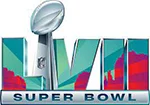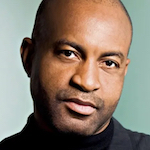 |
There were more than 50 advertisers during Super Bowl LVII, raking in more than $350 million for broadcaster Fox at nearly $7 million a pop.
As one commentator put it, “this is the only time of year that we don’t run in the opposite direction from ads.”
But of those 50, how many really needed to be there? True, it is one of the most watched events of the year, and this year the ratings were the third-highest in history—113 million viewers—but how many REALLY needed to be there?
Day-after rankings of Super Bowl ads are also an annual sport, with everyone from USA Today to local TV stations weighing in. The Kellogg School of Business at Northwestern University published its annual results the morning after the big game.
"What I expected going into it was that it would be a relatively safe year: mostly positive upbeat tones, and that is largely what we saw," Professor David Rucker said. "Brands played it safe."
The Kellogg ratings, which range from A to F, are based on an academic framework that measures ads based on marketing qualities such as distinction and positioning, with a panel of business students applying the metrics to the ads. This year's crop of ads doesn't include any that received an "F" rating from the panel.
Here’s a link: Super Bowl 2023 commercials: Here are the winners and losers (msn.com)
Looking over the list, it was obvious who did and didn’t need to be among those shelling out millions in exchange for seconds of notoriety and borrowed-interest exposure.
 |
| Popcorners: Needed to be there |
Popcorners, a new brand that scored an A in the rankings, clearly needed to be there. So did Anheuser Busch, because they are always there and it is football, for goodness’ sakes. Pepsi, because they gave up the halftime show sponsorship and needed a presence. Navy (I guess), because they need people and academy graduates are not staying much beyond the minimum service requirements for their $400,000 degree. Not to be outdone, T-Mobile went big with a 60-second spot starring Bradley Cooper because hey, it’s war out there in cellular land.
But there were some who might have spent their ad dollars more wisely. DoorDash, for example, which reported a big loss for 2021 and whose stock has slid substantially since its peak last June. Or an outfit called He Gets Us, which appears to have backing from On High but doesn’t seem to get how to advertise. Or Avocados from Mexico, which are on sale at two for a buck and are about the only thing in the store whose price has gone down.
 |
| Hellman's Mayonnaise: Didn't |
One of the most puzzling spots was a Hellmann’s Mayonnaise commercial starring Brie Larson, Jon Hamm and Pete Davidson. It was clever, well produced, and ranked highly by the Kellogg panel. But mayonnaise? A slow-moving SKU without much interest or consumer involvement? Seven million long ones on mayonnaise?
Let us assume that a prime-time commercial costs $150,000. You can get them for less, but we will stick to round numbers. For $7 million, you can purchase more than 4,500 commercials in prime time, as opposed to ONE in the Super Bowl. That means you could cover the Earth in mayonnaise commercials, or at least most of the country, constantly reminding us that it is time to upgrade your ‘naise, man.
I hope marketers are busy measuring the effects of those commercials, because $7 million will be hard to come by in coming months. They should also remember that 113 million viewers does not mean 113 engaged viewers, just that they were in a space where the Super Bowl was on television. It might have been a home viewing party, or at a bar, or at home dozing in a recliner while gathered with family.
And if anyone talks about old canards such as lagged effects or especially the publicity that comes with being a Super Bowl advertiser, just stare at them for a moment, then shrug and walk away. It can’t be good publicity for your ad to rank at the bottom of the C list.
***


 The New York Yankees give up some space on their uniforms for a little advertising—a move that shows how some companies believe branding means slapping your name and logo all over everything the consumer is expected to encounter or see.
The New York Yankees give up some space on their uniforms for a little advertising—a move that shows how some companies believe branding means slapping your name and logo all over everything the consumer is expected to encounter or see. Suresh Nair, a veteran of Grey, McCann Erickson and J. Walter Thompson ad agencies, has joined Brunswick Group in New York as partner in its creative campaigns & content unit.
Suresh Nair, a veteran of Grey, McCann Erickson and J. Walter Thompson ad agencies, has joined Brunswick Group in New York as partner in its creative campaigns & content unit. Weber Shandwick has hired advertising veteran Lewis Williams as executive VP and head of brand impact.
Weber Shandwick has hired advertising veteran Lewis Williams as executive VP and head of brand impact. Why many of the world’s most popular brands continue to find success advertising with television.
Why many of the world’s most popular brands continue to find success advertising with television.


 Have a comment? Send it to
Have a comment? Send it to 
No comments have been submitted for this story yet.